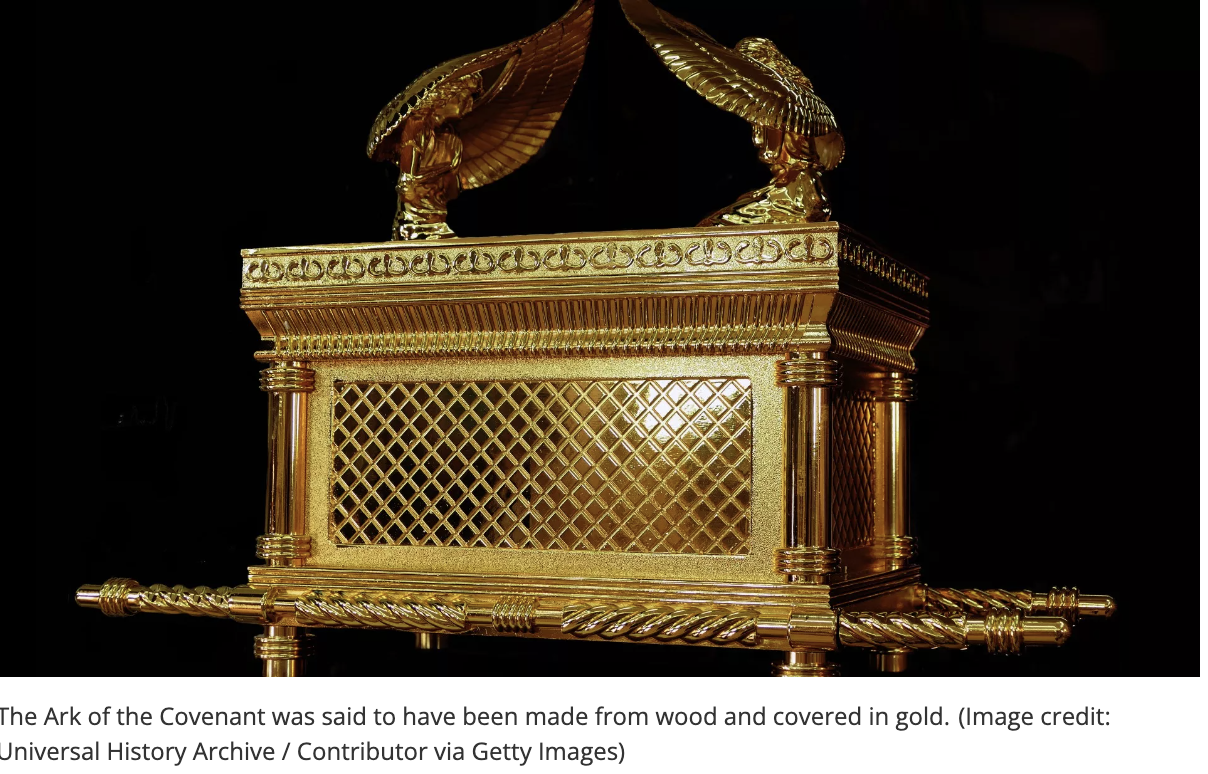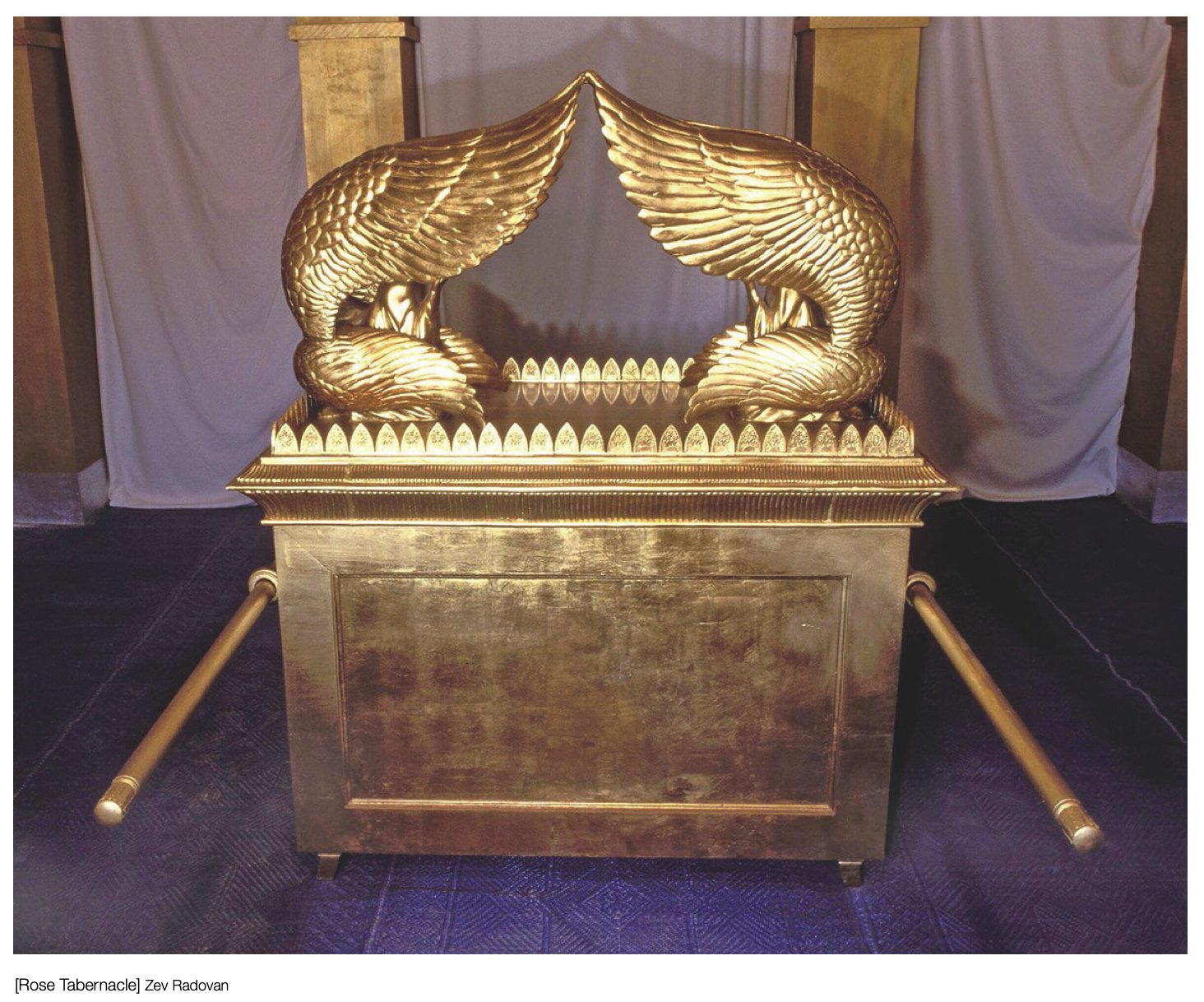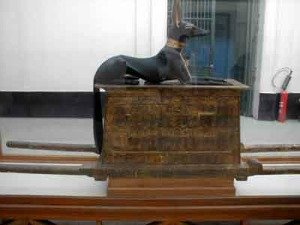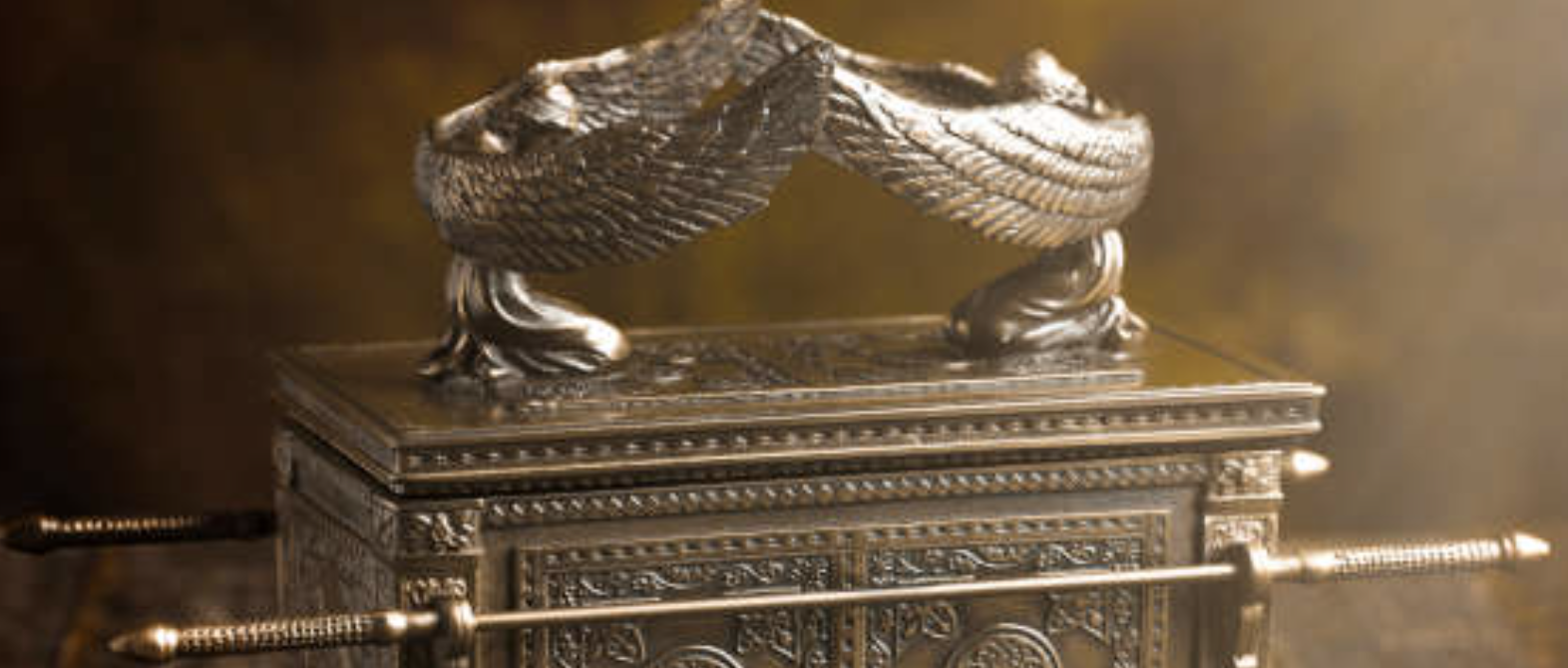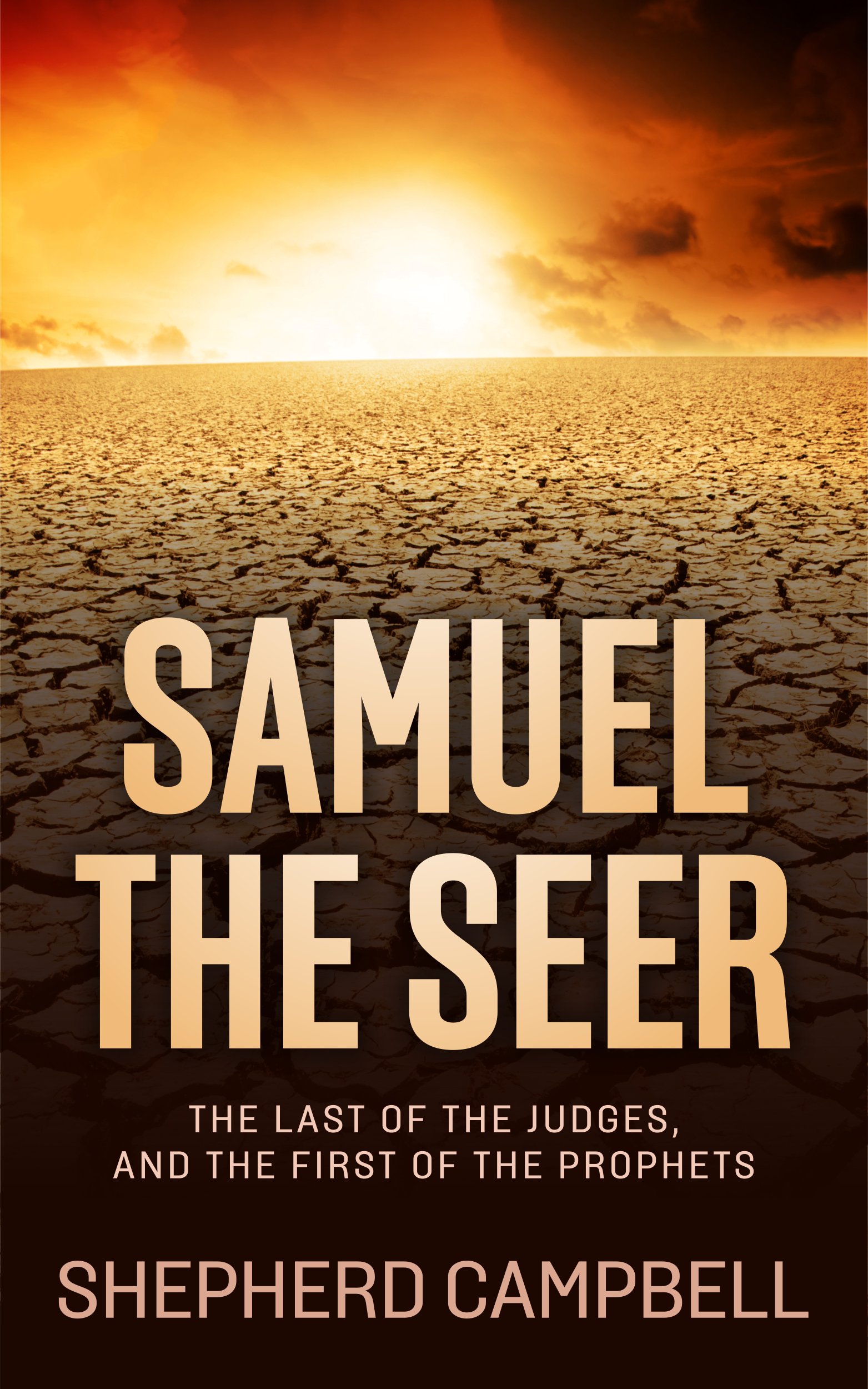VISIT OUR FACEBOOK PAGE!
The Ark of the Covenant
The Ark of the Covenant is described in intimate detail throughout the book of Exodus. It was the central piece in the Tabernacle of Moses. The Ark of the Covenant was to be placed inside the Holy of Holies, or the Most Holy Place. This was a 15' x 15' x 15' room inside the Tabernacle tent, separated from the Holy Place by a veil. It was the innermost room of the Tabernacle and housed the ark.
Exodus 25:10-22 describes the dimensions and construction of the Ark of the Covenant and its Mercy Seat. In verse ten God tells Moses to build "an ark of acacia wood".
The ark was to be 2.5 cubits long, 1.5 cubits wide and 1.5 cubits high. These dimensions equate to a box 3'9" long by 2'3" wide and 2'3" deep. It was constructed of wood and overlaid with a sheet of gold inside and out, and a gold molding or crowning around the bottom of it.
On each side of the Ark were two golden rings fastened to it. Through these rings wooden poles, also overlaid with gold, were slid into in order to carry the Ark of the Covenant without actually touching it. God explicitly states that these poles should never be removed from the golden rings.
Yahweh also states that the Ark of the Covenant is not to be touched by any man, woman or child. Violations of this command would result in immediate death to the one who touches it.
Interestingly enough arks were common objects to the ancient Egyptians. Thus Moses would have had a precise idea of what God had wanted him to build based on his Egyptian experience. For instance, when King Tut's tomb was discovered many articles and objects were also discovered within the tomb. One such object was the Anubis Chest.
The Anubis Chest was found guarding the entrance of Tut's treasury. It functioned as a shrine to Anubis, the Jackal-god of mummification and the underworld. It was constructed of wood, 46.54 inches tall (3.87 feet), 106.29 inches long (8.85 feet) and 20.47 inches in width (1.7 feet). The inside of Anubis' ears and collar were of gold leaf, with eyes inlaid of calcite and obsidian set into gold, and its nails were silver.
As the two cherubim upon the mercy seat of the Ark also functioned as a lid, so does the Anubis figure on the Anubis Chest. It was a covering, or lid, similar to that of Israel's Ark. Also like the Ark of the Covenant, the Anubis Chest was carried by poles running along its side. Moses would have know exactly what God wanted with His Ark of the Covenant based on similar Egyptian objects and arks which he had previously seen while living in Pharaoh's household.
Inside of the Ark of the Covenant were the tablets God had given Moses. Exodus 25:16 seems to indicate God is giving Moses the plans for the Tabernacle before He has given Moses the commandments.
"And you shall put into the ark the testimony which I shall give you."
The other contents of the Ark of the Testimony depend on one's interpretation of the context. It should be noted the two tablets are the only objects specifically mentioned as residing inside of the Ark. I Kings 8:9 mentions there was nothing else in the Ark, save the stone tablets.
"There was nothing in the ark save the two tablets of stone, which Moses put there at Horeb, when the LORD made a covenant with the children of Israel, when they came out of the land of Egypt."
However, in the New Testament Paul has a different take on what lay inside the Ark. It should be noted, though, that the Ark of the Covenant had been missing from Israel for an unknown but lengthy period by the time of Paul. In the Old Testament no references are made to it after the Babylonian destruction of Jerusalem and the Temple during the time of the prophet Jeremiah, ca 586 BC. It simply vanishes into history, and has not been seen since. Hebrews 9:3-5 depicts Paul's opinion on the matter.
"And after the second veil, the Tabernacle which is called the Holiest of all; Which had the golden censer, and the Ark of the Covenant overlaid round about with gold, wherein was the golden pot that had manna, and Aaron's rod that budded, and the tablets of the Covenant; And over it the cherubims of glory shadowing the Mercy seat; of which we cannot now speak particularly."
It is, of course, possible that at a later date after Moses the manna and Aaron's rod were placed inside the Ark of the Covenant, though this is unlikely. However, there are verses which indicate that some objects likely rested before the Ark of the Covenant, if not inside of it. These objects definitely were located inside the Most Holy Place with the Ark of the Covenant. Exodus 16:33-34 is one of these verses.
"And Moses said unto Aaron, Take a pot, and put an omer full of manna therein, and lay it up before the LORD, to be kept for your generations. As the LORD commanded Moses, so Aaron laid it up before the Testimony, to be kept."
As stated above, "the Testimony" was another description of the Ark.
Another example is provided in Numbers 17:10-11.
"And the LORD said unto Moses, Bring Aaron's rod again before the Testimony, to be kept for a token against the rebels; and thou shalt quite take away their murmurings from me, that they die not. And Moses did so: as the LORD commanded him, so did he."
Thus Scripture indicates that both manna and Aaron's rod were located within the Holy of Holies, perhaps lying on the ground before the Ark of the Covenant, inside of which were the two stone tablets of the testimony of God to Moses on Mt. Sinai. On top of the ark was the Mercy Seat, where God's presence in the tabernacle of Moses rested.
Moses met with God face to face, and seemingly more than once a year, quite likely on a daily basis though we will never know how often God and Moses met and talked. Moses, however, was an exceptional man. After the time of Moses, the High Priest was only allowed to enter the Holy of Holies once a year. Once a year the High Priest would stand before the Ark of the Covenant and sprinkle blood on the Mercy Seat as a confession of the sins of the people and to atone for Israel's sins. The relationship between God and His people would be restored, and the High Priest would either emerge as a sign of forgiveness, or die inside as a sign of God's anger.
The Mercy Seat
The Ark of the Covenant was a special and mysterious object within the tabernacle of Moses. It has captured the imagination of people since antiquity, even into the modern era. Its powers are evident throughout Scripture, as the Israelites would often carry it into battle. The Ark was basically composed of two parts; the actual wooden chest overlaid with gold and containing the tablets, and the mercy seat which served as the Ark's covering and lid.
The mercy seat was God's Throne among His people. It was where the presence of God dwelt. It was to be made of one solid piece of gold and hammered into shape. God lays forth precise instructions to Moses concerning the mercy seat in Exodus 25:17-22.
Verse seventeen introduces the mercy seat.
"And you shall make a mercy seat of pure gold, two and a half cubits long and one a half cubits wide."
The mercy seat was to be an especially significant object, for it is where the presence of God would rest and lead Israel. God's actual presence rested on top of the Ark, on its lid, or the mercy seat as will be seen. Scripture tells us two objects adorned the mercy seat, which to this day scholars are not absolutely certain what these objects looked like though the Bible does give some description.
God instructed Moses to construct two golden cherubim to place on each end of the mercy seat in Exodus 25:18.
"And you shall make two cherubim of gold, make them of hammered work at the two ends of the mercy seat."
Verse nineteen specifically mentions that the entire mercy seat, including the cherubim, were to be "of one piece" of gold, thus it required a great deal of skill. The cherubim were to be facing each other, with their winds spread out before them. Verse twenty describes their wings as being "spread upward, covering the mercy seat with their wings and facing each other".
Exodus 25:22 depicts the function of the mercy seat and significance of the Ark of the Covenant.
"And there I will meet with you; and from above the mercy seat, from between the two cherubim which are upon the ark of the testimony, I will speak to you about all that I will give you in commandment for the sons of Israel."
The Ark of the Covenant Today
The Ark of the Covenant has never been found. It remains a mystery. According to Ethiopian Orthodox tradition, the Ark of the Covenant is currently located in the Church of Our Lady Mary of Zion in the city of Aksum, Ethiopia. This claim, however, carries much skepticism by Ark enthusiasts as nobody has ever been permitted to verify their claim.
Thus, in all likelihood the Ark of the Covenant is lost to history - perhaps hidden long ago, only to never be found. The last mention of the Ark of the Covenant is in Jeremiah 3:16. Jewish tradition holds that the Ark of the Covenant disappeared from the Temple prior to the Babylonian siege of the Temple and Jerusalem in 586 BC.
Jeremiah lived during this siege and witnessed it firsthand. Jeremiah 52 is a firsthand account of the complete destruction the Babylonians levied on Jerusalem. Jeremiah also gives a detailed account of the Temple items taken by the Chaldeans. Out of the many, many items looted by the Babylonians, one item remains conspicuously absent - the Ark of the Covenant.
It was nowhere to be found by the time Nebuchadnezzar's army breached the wall of Jerusalem and swarmed the temple precincts. Some say Jeremiah commandeered some priests and together they slipped out of town with the Ark.
Some say the Knights Templar discovered the Ark during the Crusades and shipped it back to England. Others say the Ark was smuggled into Egypt and now rests hidden in the tunnels under the great temple at Tanis. Still others say it rests in Ethiopia, as noted above.
In reality, the Ark remains elusive. A fascinating & enigmatic box of acacia wood overlaid with gold has captured the imaginations of humanity since it's creation by Moses around 3500 years ago. So while the Ark's present location has baffled scholars, archaeologists and enthusiasts for millennia, one thing is certain about the Ark's future.
The Ark of the Covenant will be found and one day put on display for all to see.
Then God’s temple in heaven was opened, and the ark of his covenant was seen within his temple. There were flashes of lightning, rumblings, peals of thunder, an earthquake, and heavy hail.
Revelation 11:19
SAMUEL the SEER
Now Available in Print & eBook on Amazon!!
POPULAR TOPICS
Learn more about these popular topics below. The Bible is full of fascinating stories, characters and mysteries!
BIBLE MAPS
Explore the land of the Old Testament! View these maps of the Bible.
